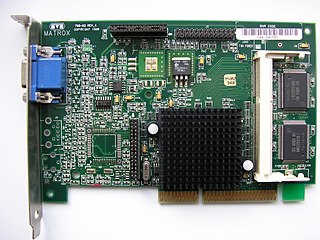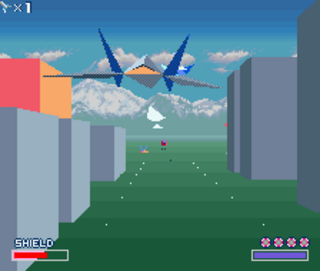 W
WAlphanumeric Television Interface Controller (ANTIC) is an LSI ASIC dedicated to generating 2D computer graphics to be shown on a television screen or computer display. Under the direction of Jay Miner, the chip was designed in 1977-1978 by Joe Decuir, Francois Michel, and Steve Smith for the Atari 8-bit family of home computers first released in 1979 and was patented by Atari, Inc. in 1981. ANTIC is also used in the Atari 5200 video game system released in 1982, which shares most of the same hardware as the 8-bit computers.
 W
WColor Television Interface Adaptor (CTIA) and its successor Graphic Television Interface Adaptor (GTIA) are custom chips used in the Atari 8-bit family of computers and in the Atari 5200 home video game console. In these systems, a CTIA or GTIA chip works together with ANTIC to produce the video display. ANTIC generates the playfield graphics while CTIA/GTIA provides the color for the playfield and adds overlay objects known as player/missile graphics (sprites). Under the direction of Jay Miner, the CTIA/GTIA chips were designed by George McLeod with technical assistance of Steve Smith.
 W
WHuC6270 is a video display controller (VDC) developed by Hudson Soft and manufactured for Hudson Soft by Seiko Epson. The VDC was used in the PC Engine game console produced by NEC Corporation in 1987 and in the SuperGrafx and TurboGrafx 16 also developed by NEC.
 W
WThis is a list of home computers, sorted alphanumerically, which lists all relevant details of their video hardware.
 W
WThe G200 is a 2D, 3D, and video accelerator chip for personal computers designed by Matrox. It was released in 1998.
 W
WThe 8563 Video Display Controller (VDC) was an integrated circuit produced by MOS Technology. It was used in the Commodore 128 (C128) computer to generate an 80-column RGB video display, running alongside a VIC-II which supported Commodore 64-compatible graphics. The DCR models of the C128 used the later and more technically advanced 8568 [D]VDC controller.
 W
WThe MOS Technology 8568 Video Display Controller (VDC) was the graphics processor responsible for the 80 column or RGBI display on D[CR] models of the Commodore 128 personal computer. In the Commodore 128 service manual, this part was referred to as the "80 column CRT controller." The 8568 embodied many of the features of the older 6545E monochrome CRT controller plus RGBI color.
 W
WThe 7360 Text Editing Device (TED) was an integrated circuit made by MOS Technology, Inc. It was a video chip that also contained sound generation hardware, DRAM refresh circuitry, interval timers, and keyboard input handling. It was designed for the Commodore Plus/4 and 16. Packaging consisted of a JEDEC-standard 48-pin DIP.
 W
WThe VIC , specifically known as the MOS Technology 6560 / 6561, is the integrated circuit chip responsible for generating video graphics and sound in the Commodore VIC-20 home computer. It was originally designed for applications such as low cost CRT terminals, biomedical monitors, control system displays and arcade or home video game consoles.
 W
WThe VIC-II, specifically known as the MOS Technology 6567/8562/8564, 6569/8565/8566 (PAL), is the microchip tasked with generating Y/C video signals and DRAM refresh signals in the Commodore 64 and C128 home computers.
 W
WThe Motorola 6845, or MC6845, was a display controller that was widely used in 8-bit computers during the 1980s. Originally intended for designs based on the Motorola 6800 CPU and given a related part number, it was more widely used alongside various other processors, and was most commonly found in machines based on the Zilog Z80 and MOS 6502.
 W
WThe MC6847 is a video display generator (VDG) first introduced by Motorola and used in the TRS-80 Color Computer, Dragon 32/64, Laser 200, TRS-80 MC-10, NEC PC-6000 series, Acorn Atom, and the APF Imagination Machine, among others. It is a relatively simple display generator compared to other display chips of the time. It is capable of displaying text and graphics contained within a roughly square display matrix 256 pixels wide by 192 lines high. It is capable of displaying nine colors: black, green, yellow, blue, red, buff, cyan, magenta, and orange. The low display resolution is a necessity of using television sets as display monitors. Making the display wider risked cutting off characters due to overscan. Compressing more dots into the display window would easily exceed the resolution of the television and be useless.
 W
WThe Mullard SAA5050 was a character generator chip for implementing the Teletext character set. The SAA5050 was used in teletext-equipped television sets, viewdata terminals, and microcomputers, most notably the Philips P2000T homecomputer (1980), Acorn's System 2 (1980), and the BBC micro's teletext-compatible 'Mode 7' display mode (1982). This chip was also manufactured by Philips and Signetics.
 W
WThe High-Performance Graphics Display Controller 7220 is a video display processor capable of drawing lines, circles, arcs, and character graphics to a bit-mapped display. It was developed by NEC in order to support the Kanji character set efficiently, which explains why the APC computer line had such superior graphics compared to competing models. The chip was also used in later computers, such as NEC's PC-9801 and the NEC APC II and APC III computers, the NEC N5200 intelligent kanji terminal, the optional graphics module for the DEC Rainbow, the Tulip System-1, and the Epson QX-10.
 W
WThe Original Chip Set (OCS) is a chipset used in the earliest Commodore Amiga computers and defined the Amiga's graphics and sound capabilities. It was succeeded by the slightly improved Enhanced Chip Set (ECS) and greatly improved Advanced Graphics Architecture (AGA).
 W
WRealityEngine is a 3D graphics hardware architecture and a family of graphics systems which was developed and manufactured by Silicon Graphics during the early to mid 1990s. RealityEngine was positioned as the company's high-end visualization hardware for its MIPS/IRIX platform. RealityEngine is designed for deployment exclusively within the company's Crimson and Onyx family of visualization systems, which are sometimes referred to as "graphics supercomputers" or "visualization supercomputers". The RealityEngine was marketed to large organizations, such as companies and universities that are involved in computer simulation, digital content creation, engineering and research.
 W
WThe Super FX is a coprocessor on the Graphics Support Unit (GSU) added to select Super Nintendo Entertainment System (SNES) video game cartridges, primarily to facilitate advanced 2D and 3D graphics. The Super FX chip was designed by Argonaut Games, who also co-developed the 3D space rail shooter video game Star Fox with Nintendo to demonstrate the additional polygon rendering capabilities that the chip had introduced to the SNES.
 W
WThe Television Interface Adaptor (TIA) is the custom computer chip that is the heart of the Atari 2600 game console, generating the screen display, sound effects, and reading input controllers. Its design was widely affected by an attempt to reduce the amount of RAM needed to operate the display. The resulting design is notoriously difficult to program, which is an ongoing challenge for developers.
 W
WThe TMS9918 is a Video Display Controller (VDC) manufactured by Texas Instruments, introduced in 1979. The TMS9918 and its variants were used in the ColecoVision and CreatiVision, Memotech MTX, MSX, SG-1000/SC-3000, Spectravideo, Sord M5, Tatung Einstein, Texas Instruments TI-99/4, Casio PV-2000, and Tomy Tutor.
 W
WThe Thomson EF936x is a type of Graphic Display Processor (GDP). The chip could draw at 1 million pixels per second, which was relatively advanced for the year of its release (1982).
 W
WThe Tseng Labs ET4000 was a line of SVGA graphics controller chips during the early 1990s, commonly found in many 386/486 and compatible systems, with some models, notably the ET4000/W32 and later chips, offering graphics acceleration. Offering above average host interface throughput coupled with a moderate price, Tseng Labs' ET4000 chipset family were well regarded for their performance, and were integrated into many companies' lineups, notably with Hercules' Dynamite series, the Diamond Stealth 32 and several Speedstar cards, and on many generic boards.
 W
WA video display controller or VDC is an integrated circuit which is the main component in a video signal generator, a device responsible for the production of a TV video signal in a computing or game system. Some VDCs also generate an audio signal, but that is not their main function.
 W
WThe Apple IIGS, the fifth and most powerful of the Apple II family, is a 16-bit personal computer produced by Apple Computer, Inc. While featuring the Macintosh look and feel, and resolution and color similar to the Commodore Amiga and Atari ST, it remains compatible with earlier Apple II models. The "GS" in the name stands for "Graphics and Sound," referring to its enhanced multimedia hardware, especially its state-of-the-art audio.
 W
WThe Yamaha V9938 is a video display processor (VDP) used on the MSX2 home computer, as well as on the Geneve 9640 enhanced TI-99/4A clone. It was also used in a few MSX1 computers, in a configuration with 16kB VRAM.
 W
WThe Yamaha V9958 is a Video Display Processor used in the MSX2+ and MSX turbo R series of home computers and the "TIM" upgrade to the TI-99/4A. Also known as the MSX-Video chip, it is the successor to the Yamaha V9938. The main new features are three graphical YJK modes with up to 19268 colours and horizontal scrolling registers. The V9958 was not as widely adopted as the V9938.